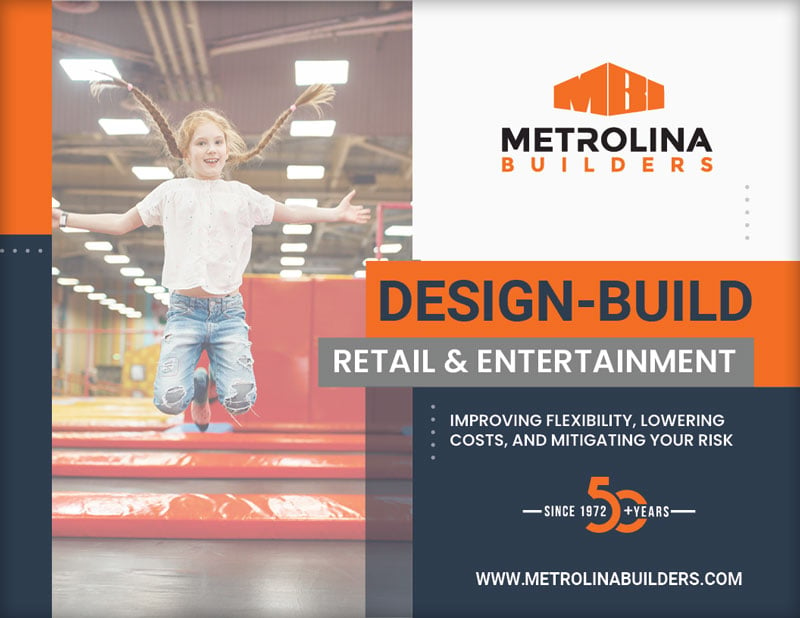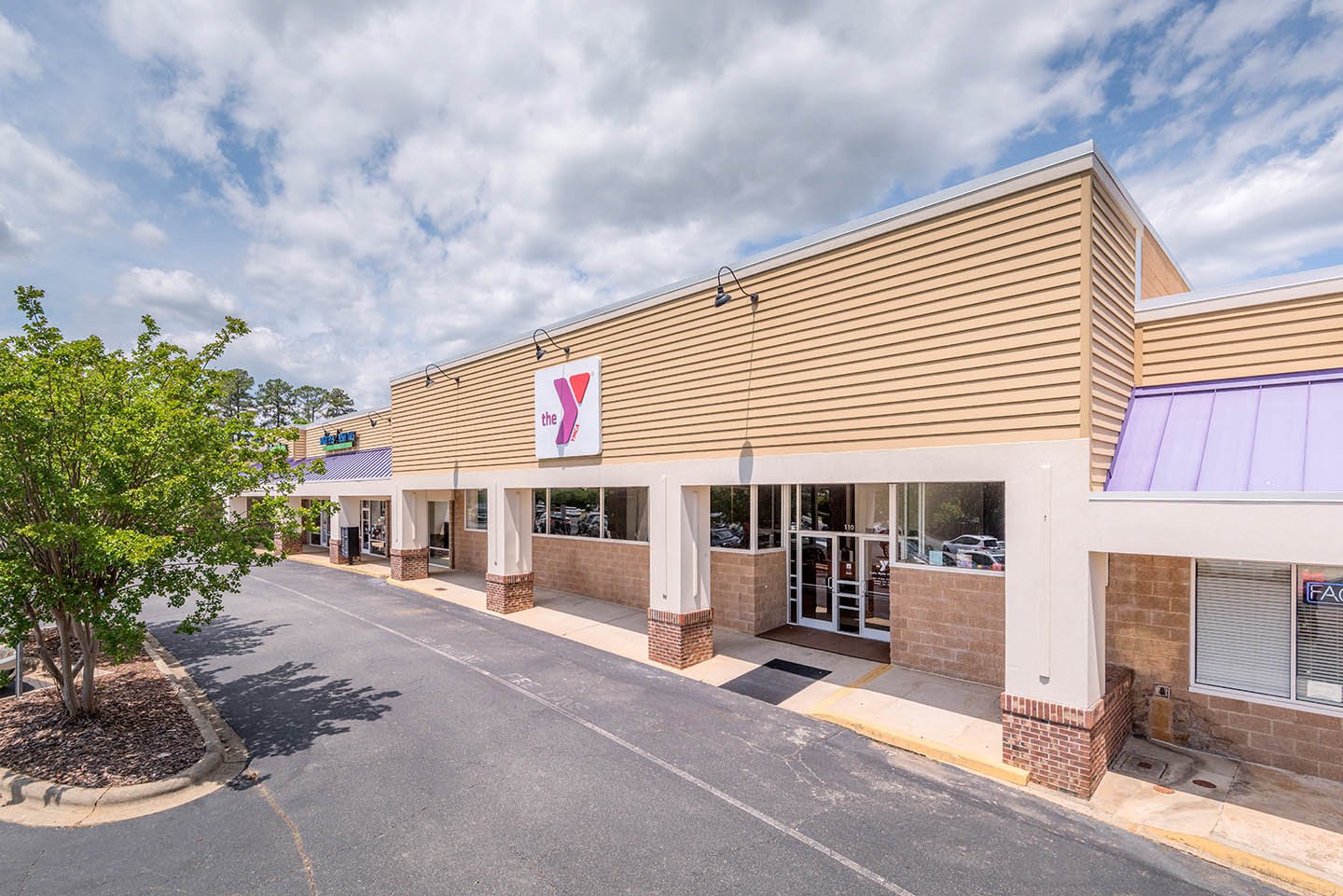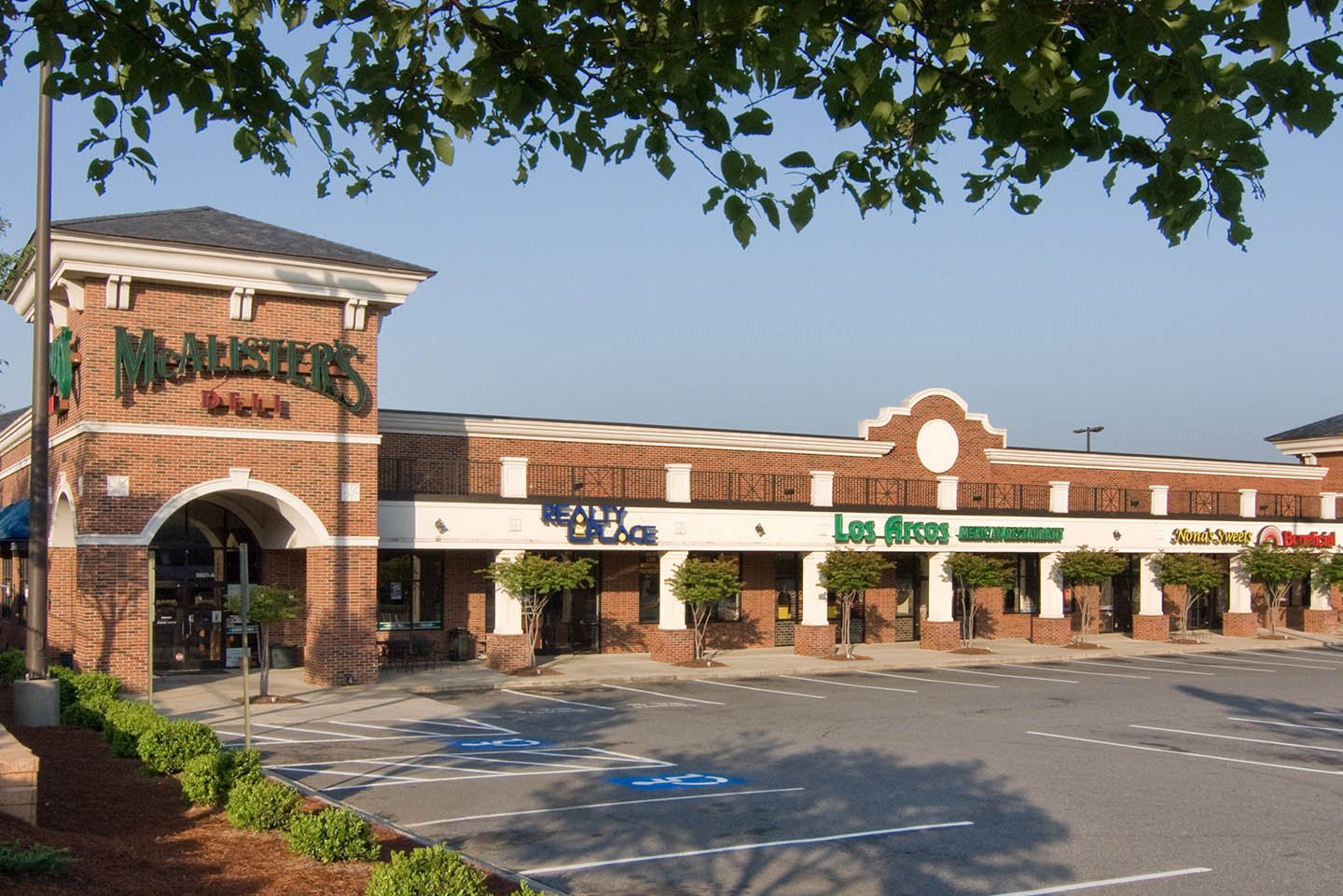The State of the Retail Industry
At Metrolina Builders, we’ve seen industries of all types evolve over the past 50 years. However, few have experienced as much change in such a short time as the retail industry.
From the meteoric rise of e-commerce to the many & varied complications imposed by the pandemic, retailers and investors continue to face unprecedented challenges.
Fortunately, change always brings new opportunities; there are always better ways of doing things; and we know the future of retail is bright — even if it might look a little different than it does today.
In this guide, we’ll explore the benefits of Design-Build in retail and how it can help you improve flexibility, lower costs, and mitigate risks. We’ll explore key ways owners & investors can navigate the changing retail landscape of today and meet the challenges of tomorrow head-on. Finally, we’ll share what our 50+ years of Design-Build experience can tell us about the future of the industry.
We hope that Design-Build is something you’re equally passionate about or maybe you’re just discovering it for the first time. Either way, our guide is designed for developers, investors, and retailers who are looking to build more than cold, dark shells.
It’s for those who want to leave a legacy that will last lifetimes. We hope this guide helps you achieve your next great vision — and if you need help turning that vision into reality, we hope you consider partnering with us.
But first, let’s take a closer look at what, exactly, design-build is and how it differs from the traditional plan-and-spec route.
Design-Build vs Plan-and-Spec.
The two most common development project delivery methods are 1) “plan-and-spec” and 2) “design-build,” Metrolina’s proven approach to retail design & construction.
Here’s how they stack up.
Plan-and-Spec: the Traditional Approach to Building
The first method is known as plan-and-spec. Owners must first hire a design team (architect, civil, mechanical, electrical, plumbing, structural engineer, etc.) to create & develop construction documents & drawings, often without having a full picture of the product.
Next, the owner enters into several contracts with multiple teams including designers and general contractors — who won’t be brought into the process until after the initial design is complete.
This disjointed approach grows exponentially complex given the unique challenges of retail, and it can lead to significant & unnecessary increases in costs. Additionally, the lack of a clear, concise, and shared vision can ultimately lead to a lot of headaches further down the road — like paying for a set of designs you can’t even use.
Design-Build: Your All-in-One Solution
Design-build is Metrolina Builders’ tested, proven, and preferred project delivery method. This method offers owners & investors a single point of contact: the design-builder. Even better, it’s all under one easily manageable contract.
The design-builder is responsible for the success of your project and should work tirelessly to ensure that experts in every discipline — from architecture to zoning — are aligned with your vision from day one.
This synergistic & holistic approach is why design-build has exploded in popularity in recent years.
Let’s take a closer look at the process and explore additional ways design-build can help shorten timelines, reduce risk, and eliminate many of the unnecessary costs associated with designing & building a retail location.
An Overview of the Design-Build Process
There are five critical steps that will help ensure the success of your Retail project.
Step 1: Determining Market Demand
Step 2: Calculating Your Budget
Step 3: Selecting Your Site
Step 4: Design and Permitting
Step 5: Constructing Your Retail Facility
Step 1: Determine the Market Demand
Without Metrolina Builders
Before kicking off any new project, you must first determine market demand. To do this, you’ll need to conduct a market feasibility study. Often, this means hiring a feasibility consultant or relying on publicly available tools like Google Maps to approximate critical items like square footage.
As you can imagine, things get even more challenging when you have to track down county tax appraisals, parcel ID numbers, and other information that might not be accurately represented in public records.
With so much at risk, you simply can’t afford to leave your market feasibility study to chance.
With Metrolina Builders
Metrolina Builders is composed of battle-tested experts who know how to bring your vision to reality — beginning with the very first step. We use our 50+ years of experience to generate the most accurate market feasibility study possible.
Our process includes:
- Identifying competitor locations & occupancy
- Calculating the square footage of competitor locations
- Determining occupancy levels of competitive properties
- Conducting due diligence
- All other related functions

Your Guide to Improving Flexibility, Lowering Costs, and Mitigating Your Risk
Step 2: Calculating Your Budget
Without Metrolina Builders
The next step is arguably one of the most important: calculating your build budget.
Traditionally owners look to architects for historical cost information. Unfortunately, this can result in a lot of headaches for the investor. If the architect lacks real-time knowledge of current costs — or potential shortages — you could wind up with an unrealistic budget and a fortune in unnecessary costs.
With Metrolina Builders
When you hire Metrolina Builders, our professionals take care of the most stressful and time-consuming elements of the design and building process, leaving you with only one relationship & contract to manage.
This method helps reduce costs, avoid potential risk, and cut down on redundant & unnecessary work by allowing us the ability to provide you with a complete conceptual design up front, including a site plan, survey, soil report, and cost estimate.
That means you won't see costs rise unless you decide to expand the scale of the project after development has begun. Read the full article on how Metrolina Builders can reduce costs with our design-build method.
Step 3: Site Selection
Without Metrolina Builders
The risk starts to multiply when we start looking at site selection. That’s because local zoning laws, safety regulations, and other jurisdictional requirements can vary drastically — and all must be strictly followed.
After identifying the proper zoning classifications, owners will have to review potential facility sites. This often requires owners & investors to hire a local commercial realtor and contractor who specializes in the retail industry.
With Metrolina Builders
When you work with Metrolina Builders, we work tirelessly to find the perfect site for your next project, calculate your exact occupancy and sizing needs, and handle any other needed service that might come our way.
This often includes, but is not limited to, the following:
- Site Analysis / Evaluation
- Due Diligence
- Geotechnical and Survey
- Programming
- Master Planning
- Conceptual Design
- Budget Development
- Rezoning Requirements
Step 4: Design & Permitting
Without Metrolina Builders
The Design & Permitting phase can be one of the most frustrating elements for owners and investors — as well as the most costly. If your architect, engineer, and contractors aren’t fully aligned from the beginning, your entire project could be placed in jeopardy.
For example, you could receive incredible designs from your architect, but they fail to utilize the most cost-effective materials or building systems. It’s only later that you discover your designs can’t be built for your budget.
These unnecessary risks could significantly increase your costs, delay your opening by months, or even worse, you might have to go back to the drawing board entirely.
With Metrolina Builders
Metrolina Builders is proud to be your one-stop shop for project management and execution. Because we are involved early and often in the process, we can help ensure that everyone is on the same page.
We eliminate the surprises and headaches that occur from managing a disjointed team. During the pre-construction phase, we work overtime to identify your desired outcomes, assess any risks you might face, and develop proactive plans that will serve as the basis for your project.
Early integration of Metrolina’s extensive experience is how we can generate the most value for our clients. Components of our pre-construction services include:
- Design / Engineering Coordination
- Building Systems Evaluation
- Constructability Review / Conflict Resolution
- Logistics Planning
- Subcontractor / Vendor Integration
- Value Engineering
- Preliminary Budgets/Estimates
- Preliminary Scheduling
- Subcontractor Solicitation / Evaluation
- Estimating
- Permit Coordination
Step 5: Building Your Retail Facility
Without Metrolina Builders
When it comes to construction, the final phase of any project, it's important to plan carefully. However, the traditional plan-and-spec method can often lead to surprise costs, unnecessary errors, and avoidable mistakes.
This is where things can get tricky for owners.
When unexpected costs arise, owners can find themselves desperately fighting to get their project back on track, scaling back on their vision, or ramping up their budget. It's a frustrating and costly situation, and it can be avoided with the right approach.
With Metrolina Builders
Our design-build experts have decades of experience in the retail industry — and we use those insights to help us most effectively manage projects in today’s changing retail market. Our Construction phase services can include:
- Site Work
- Core and Shell
- Tenant Improvements
- Scheduling
- Project Management
- Cost Controls
- Subcontractor Management
- Quality Control
- Safety Compliance
- Submittal Management
- Inspections Management
- Project Closeout
Bonus: The Future of the Retail Industry
So, what does the future of retail look like? It’s all about flexibility.
It will be made up of mixed-use construction and local neighborhood services. The ones who thrive will be the small, 6,000 - 12,000 sq ft rows of shops with a restaurant on each end and plenty of patio space.
It’s all about checking multiple boxes.
A building that can house a coffee shop one day and an accounting firm the next helps you reduce your risk, plan for change, and set yourself up for long-term success.
Besides, the folks at City Hall shouldn’t really care if you’re putting in a coffee shop or an accounting office. It’s the flexibility that matters — and working with a quality design-builder offers the greatest possible flexibility.
For even more retail design trends, check out our full-length article on the topic.
Ready to get started? Contact us today.

.jpg?width=1440&height=961&name=circa-lighting4%20(1).jpg)

